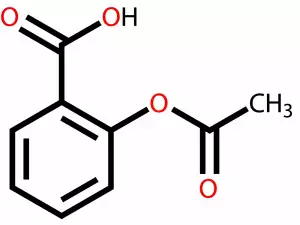Linoleic Acid is a polyunsaturated omega-6 fatty acid which is of exceptional importance for the skin's defensive functions.
It's used in the biosynthesis of some prostaglandins and arachidonic acid. Linoleic acid was discovered by complete accident in 1978 by Michael Pariza at the University of Wisconsin.
Linoleic acid is found in the lipids of cell membranes. This acid comprises 5 - 6% of the total energy value of mother's milk and is vitally important for the proper development and growth of breastfeeding babies.
Benefits of Linoleic Acid
In practice, linoleic acid is used primarily as a treatment and prophylactic of dermatological problems such as cracked and dry skin.

Concomitant therapy with linoleic acid is sometimes used for corticosteroid treatment of various dermatoses. It aids skin regeneration, moistens the skin and helps against itch and inflammation.
The protective properties of linoleic acid have been proven in cases of ultraviolet and x-ray exposure. This makes it an exceptionally important factor in the battle against and prevention of skin cancer.
There are numerous studies showing diabetics' greater need of linoleic acid. It reduces a number of complications that this debilitating disease can cause.
Linoleic acid in the form of supplements is ideal for athletes and people who work out that want to gain more muscle mass and shed excess weight. This acids helps them achieve the desired results easier and faster.

Linoleic acid prevents small fatty cells from getting larger. It blocks fatty growth and significantly increases the speed at which fat is burned.
The acid's function is twofold - it suppresses the deposit of new fat in fat cells and activates the processes for burning ones that have already accumulated.
Linoleic acid maintains healthy cell growth in the lungs, stomach, skin, breasts and colon; it maintains heart and circulatory system health; maintains healthy blood pressure levels; maintains blood sugar levels and bone strength.
Linoleic acid also ensures a healthy and normally functioning immune system.
Sources of Linoleic Acid
Linoleic acid is primarily found in certain oils but people can get it from veal and beef, feta cheese, cow's milk and the dairy products of ruminant animals.

Linoleic acid can be obtained from sunflower oil, hemp oil, grapeseed oil and others. Linoleic acid is also sold in the form of supplements.
Deficiency of Linoleic Acid
Deficiency of linoleic acid is expressed in the form of symptoms such as dry hair and hair loss, difficult healing wounds.
Long-term deficiency of linoleic acid can disrupt the skin's protective properties and thus increase vulnerability to eczemas, inflammation, itching and various other skin problems.
At the same time, it can suppress production of erythrocytes and erythrocyte clotting. Disruptions in the functions of the pituitary gland are also possible, which in turn controls the functions and growth of the thyroid and adrenal glands.
Dangers of Linoleic Acid
Over the years, research of the properties of linoleic acid has led to much debate. One of the hottest issues is how it could be eliminated from the human body because it is thought to contain an isomer that isn't typical of the body. But this is still a subject of study.


















Comments